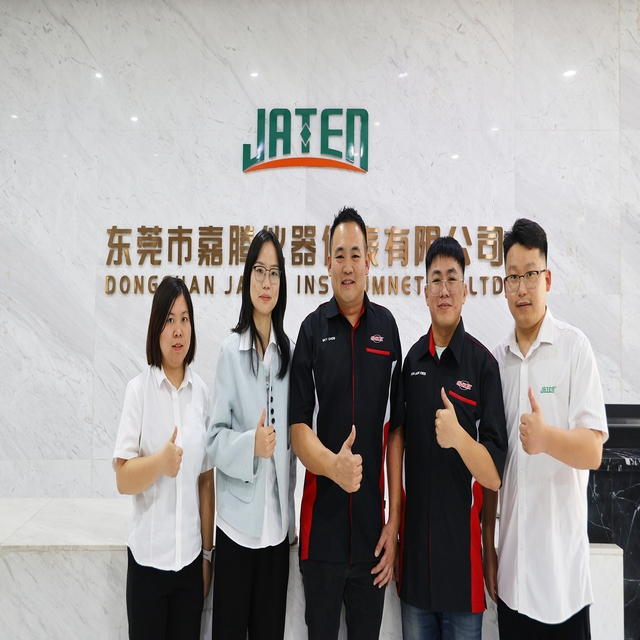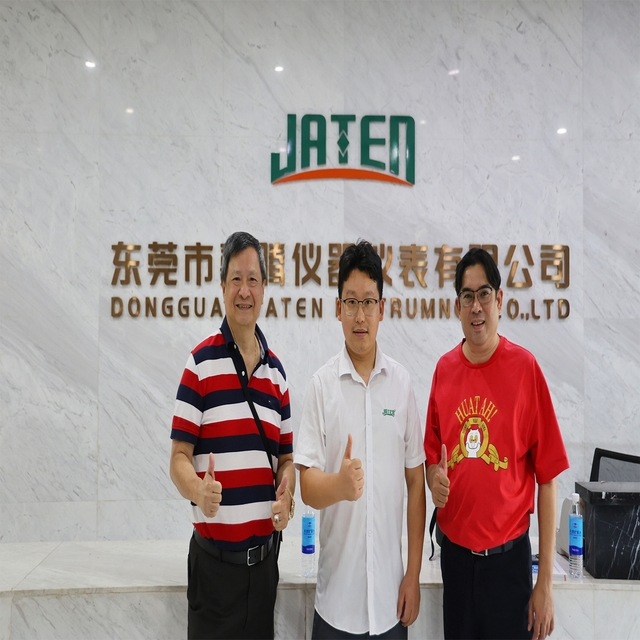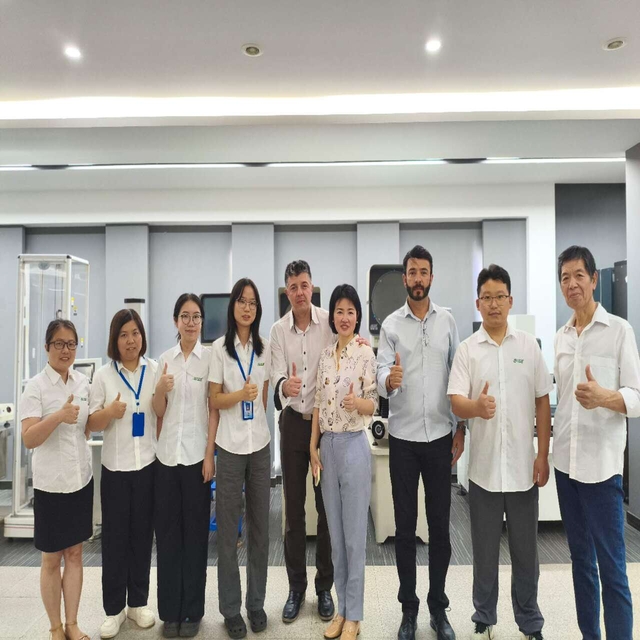
Key Role and Design Considerations of Optical Imaging Systems in Profile Projectors
Profile projectors are essential tools for industrial measurement and part inspection. Their accuracy and performance heavily depend on the optical imaging system. The optical system not only projects the contours of a workpiece onto the screen but also directly affects image clarity, measurement stability, and operational efficiency.
 Jaten
Jaten
Vietnam Trade Show Day 1 Insights
This week, our team is attending an industry trade show in Vietnam, and today marks the first day of the event. The exhibition is lively, with various companies showcasing the latest technologies and solutions, giving us a clear view of current industry trends.
 Jaten
Jaten
Malaysian Clients Visit JATEN Factory for On-Site Sample Inspection
Recently, two clients from Malaysia visited JATEN’s factory and brought their samples for on-site inspection. The visit provided an opportunity for business exchange and allowed the clients to see JATEN’s production and inspection processes firsthand.
 Jaten
Jaten
Malaysian Customers Visit Jaten Instrument to Learn About Optical Measuring Equipment
Last Saturday, Jaten Instrument welcomed two customers from Malaysia to our factory for an on-site visit. The purpose of the visit was to gain a deeper understanding of Jaten’s optical measuring equipment and our production process.
 Jaten
Jaten
Indian Customer Visits Jaten Instrument to Explore Video Measuring Machine Production
Last week, we welcomed a customer from India who visited Jaten Instrument to learn more about our Video Measuring Machine (VMM) production and applications. The customer is a representative of a precision parts manufacturing company in India, aiming to better understand Jaten’s product quality and technical capabilities.
 Jaten
Jaten
JATEN Foreign Trade Team Holds Q4 Meeting — Working Together Toward Year-End Goals
This week, JATEN’s Foreign Trade Department held its fourth-quarter meeting, guided by our company’s coaching team. All members of the sales department took part in the discussion, reviewing what we’ve achieved so far this year and setting clear goals for the final stretch.
 Jaten
Jaten
Brazilian Clients Visit JATEN Factory to Explore Cooperation Opportunities
Recently, a delegation of clients from Brazil visited JATEN Instrument & Meter Co., Ltd. Our management and sales teams warmly welcomed the guests and accompanied them on a tour of our production workshops, assembly lines, quality inspection center, and product showroom. The visit gave the clients a clear and firsthand view of JATEN’s production process, craftsmanship, and quality management practices.
 Jaten
Jaten
On-Site Technical Support and Training in Indonesia
Recently, our team traveled to Indonesia to provide on-site technical support and training for clients using our Video Measuring Machines. The visit aimed to help clients become more proficient in operating the equipment, address daily operational challenges, and ensure stable and efficient performance.
 Jaten
Jaten
Successful Conclusion of the Jakarta Exhibition
From September 25 to 27, 2025, our company participated in the industry exhibition held in Jakarta, Indonesia. The three-day event was one of our key overseas activities this year and provided an important opportunity to strengthen our presence in the Southeast Asian market.
 Jaten
Jaten
